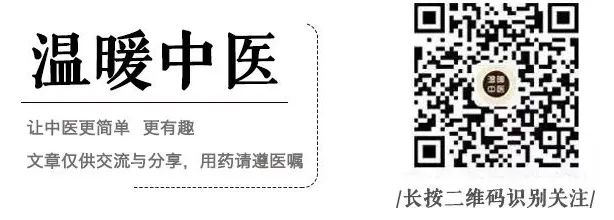
Click the blue text above to follow us

Written by: Warm TCM
With great aspirations, one can achieve great accomplishments.
■
Everyone has a desire to be beautiful.
In today’s article, we will discuss how to remove melasma, specifically referring to chloasma (黄褐斑, huáng hè bān) and freckles (雀斑, què bān), which are quite common in daily life.
What is the difference? Freckles are scattered like stars on the face, giving a cute and playful feeling. Chloasma, on the other hand, is usually connected and appears in patches, primarily located on the sides of the nose and the cheekbones, but can also appear around the eyes, mouth, and forehead.
Beauty-conscious women often choose to cover these spots with makeup. I have a female friend who is a manager at a company, and she is very busy and under pressure. Due to her chloasma, she always wears exquisite makeup whenever I see her, even though she is quite beautiful without it. However, she often lacks confidence because of the spots on her face. I told her that makeup only covers superficial flaws, but it cannot address the internal “flaws” of the body.
What methods can improve one’s complexion from the inside out?
I would like to introduce a formula: Xuefu Zhuyu Decoction (血府逐瘀汤, xuè fǔ zhú yū tāng), and the TCM patent medicine Xuefu Zhuyu Pill (血府逐瘀丸, xuè fǔ zhú yū wán).
In TCM, chloasma is generally classified into three types: Spleen Qi Deficiency (脾虚型, pí xū xíng), Cold Stagnation (寒凝型, hán níng xíng), and Blood Stasis (血瘀型, xuè yū xíng). Today, we will focus on the Blood Stasis type.
Generally speaking, women who are prone to anger or under a lot of stress are more likely to develop spots due to Qi stagnation and Blood stasis.
Blood is considered Yin and tends to be sluggish. Some may wonder how it flows if it is so lazy. This can be simply explained: it is pushed by Qi.
We can imagine blood vessels as rubber tubes. If we drip some water (representing blood) into the tube and then blow gently into it, the water will start to move, right?
Of course, this is a simplified explanation. In fact, TCM holds a high regard for the role of Qi. The “Huangdi Neijing” (内经) states that Qi is the commander of blood. In TCM, Qi is likened to a general. In ancient times, when two countries were about to go to war, the first step was to appoint a general, just like the saying in operas, “Mu Guiying led the troops at fifty-three,” meaning to act as the commander.
Qi is the general that commands the vast army—blood. Once there is a problem with Qi, such as stagnation, the movement of blood slows down, leading to stasis.
Xuefu Zhuyu Pill is a formula from the Qing Dynasty physician Wang Qingren. At that time, he encouraged people to go to the pharmacy to get herbs to brew into a decoction, hence the name Xuefu Zhuyu Decoction.
To briefly introduce Wang Qingren, he made significant contributions in the field of blood stasis. His experiences were not just theoretical; he made a bold decision to perform dissections. It is known that TCM also has its own anatomy, as recorded in the “Records of the Grand Historian” (史记). However, due to traditional beliefs, its development was slow until Wang Qingren brought it unprecedented attention.
With both theory and practice, Wang Qingren’s formulas are quite reliable. For example, Xuefu Zhuyu Decoction is widely used in later generations and has shown good results.
Xuefu Zhuyu Decoction: Chai Hu (柴胡, 3g), Tao Ren (桃仁, 12g), Hong Hua (红花, 9g), Dang Gui (当归, 9g), Sheng Di Huang (生地黄, 9g), Chuan Niu Xi (川牛膝, 9g), Chuan Xiong (川芎, 4.5g), Jie Geng (桔梗, 4.5g), Zhi Ke (枳壳, 6g), Chi Shao (赤芍, 6g), Gan Cao (甘草, 6g), decoct in water for oral administration.
TCM Patent Medicine—Xuefu Zhuyu Pill.
This formula uses Tao Ren, Hong Hua, Chi Shao, and Niu Xi to invigorate blood and dispel stasis. Tao Ren and Hong Hua play the main roles, while Chi Shao and Niu Xi assist, effectively dispelling stasis.
Chai Hu helps to soothe the liver and regulate Qi. We often say that Qi stagnation is mainly due to liver Qi stagnation. When liver Qi is not smooth, Chai Hu can help to regulate it. The Qi in our body is like vehicles on a road, constantly flowing. The orderly movement of these vehicles relies on traffic police, which in our body is the liver.
If we often experience negative emotions, the liver can become depressed, as it governs emotions. When it is not functioning actively, Qi lacks guidance, leading to stagnation, or “traffic jams,” which in turn affects blood circulation.
Chai Hu and Zhi Ke work together, one promoting upward flow and the other downward, to open the Qi pathways.
Dang Gui and Sheng Di Huang nourish the blood, ensuring that blood fills the vessels, while Chuan Xiong and Jie Geng promote the upward movement of Qi and blood, ultimately aiming to break through the stasis.
Gan Cao harmonizes the other herbs.
Individuals suitable for Xuefu Zhuyu Pill typically experience significant emotional fluctuations, are prone to anger—whether it be major or minor irritations, or feelings of frustration. They may also be in a prolonged state of unhappiness, which can lead to various unfavorable changes, such as breast tenderness, rib pain, irritability, palpitations, scanty menstruation with clots, headaches during menstruation, dark tongue, stasis spots on the tongue, and thick, dark veins under the tongue, all of which can be seen as manifestations of Qi stagnation and blood stasis, indicating that Xuefu Zhuyu Pill can be beneficial.
If there is also a condition of Qi deficiency, characterized by Qi deficiency and Qi stagnation, it can be combined with Bu Zhong Yi Qi Wan (补中益气丸, bǔ zhōng yì qì wán). If there is blood deficiency along with blood stasis, it can be combined with Gui Pi Wan (归脾丸, guī pí wán).
Finally, it is important to note that all formulas that invigorate blood and dispel stasis should not be used by pregnant women. Please remember!
Copyright Notice
This article was first published on the WeChat public account Warm TCM. All rights reserved. Any infringement will be pursued!

